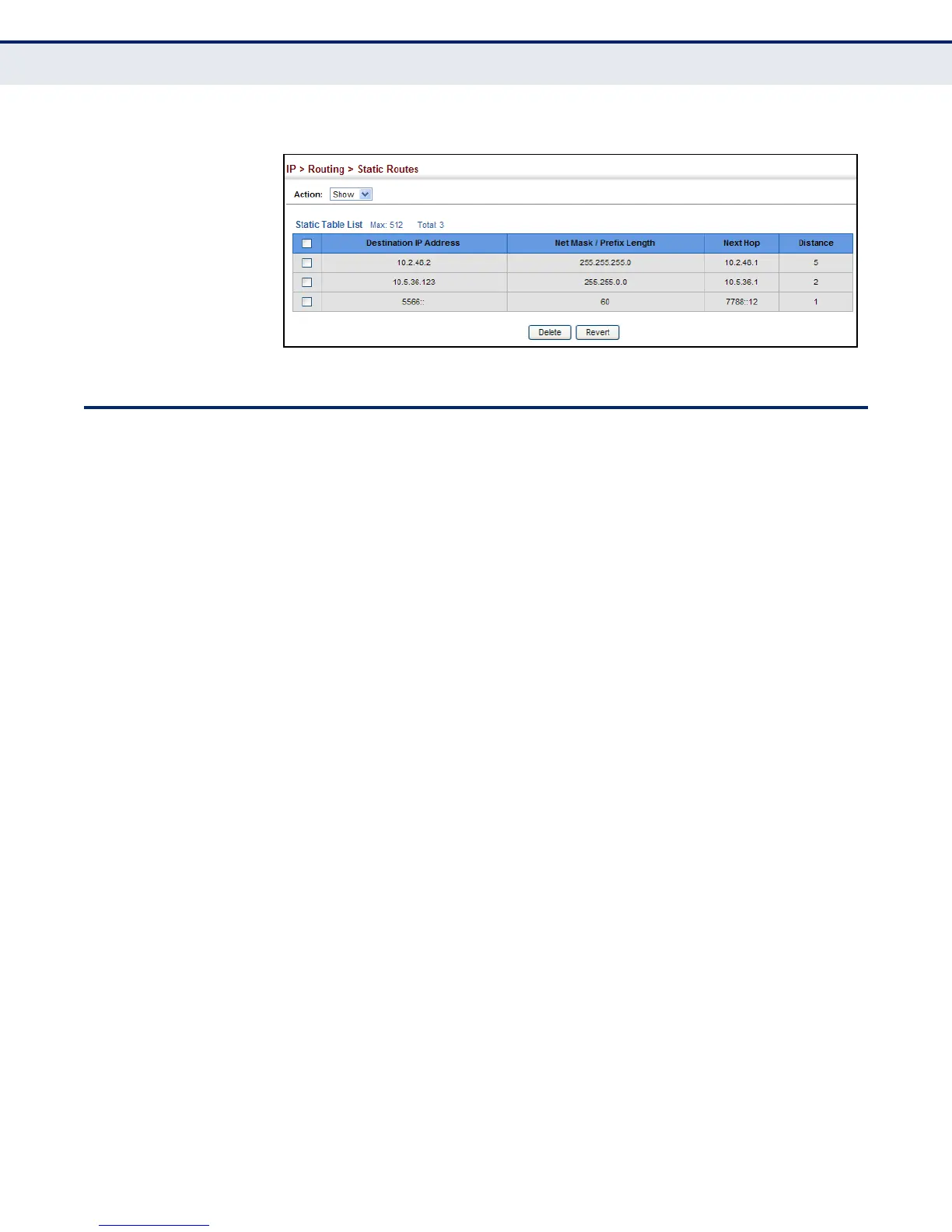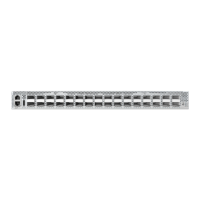C
HAPTER
17
| General IP Routing
Displaying the Routing Table
– 449 –
Figure 272: Displaying Static Routes
DISPLAYING THE ROUTING TABLE
Use the IP > Routing > Routing Table page to display all routes that can be
accessed via local network interfaces, through static routes, or through a
dynamically learned route. If route information is available through more
than one of these methods, the priority for route selection is local, static,
and then dynamic (except when the distance parameter of a dynamic route
is set to a value that makes its priority exceed that of a static route). Also
note that the route for a local interface is not enabled (i.e., listed in the
routing table) unless there is at least one active link connected to that
interface.
CLI REFERENCES
◆ "show ip route" on page 1021
COMMAND USAGE
◆ The Forwarding Information Base (FIB) contains information required
to forward IP traffic. It contains the interface identifier and next hop
information for each reachable destination network prefix based on the
IP routing table. When routing or topology changes occur in the
network, the routing table is updated, and those changes are
immediately reflected in the FIB.
The FIB is distinct from the routing table (or, Routing Information
Base – RIB), which holds all routing information received from routing
peers. The FIB contains unique paths only. It does not contain any
secondary paths. A FIB entry consists of the minimum amount of
information necessary to make a forwarding decision on a particular
packet. The typical components within a FIB entry are a network prefix,
a router (i.e., VLAN) interface, and next hop information.
◆ The Routing Table (and show ip route command) only displays routes
which are currently accessible for forwarding. The router must be able
to directly reach the next hop, so the VLAN interface associated with
any dynamic or static route entry must be up. Note that routes
currently not accessible for forwarding, may still be displayed by using
the show ip route database command.

